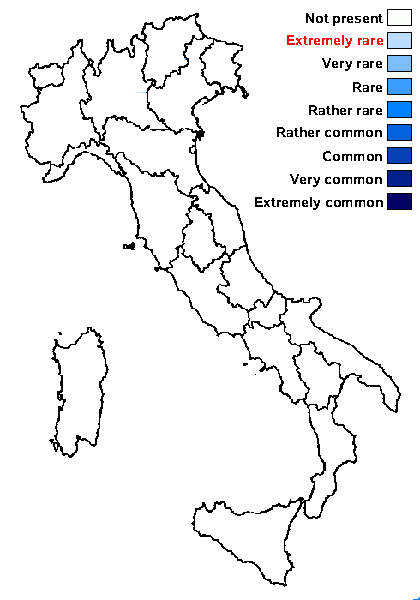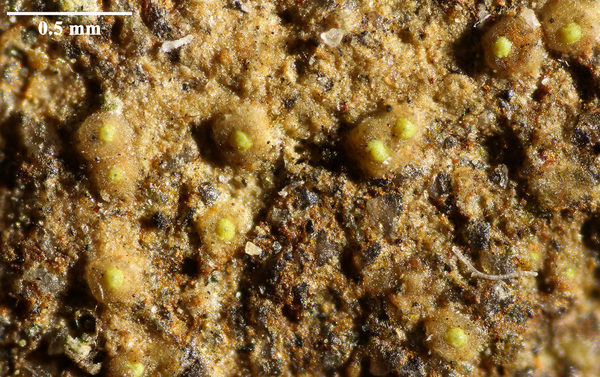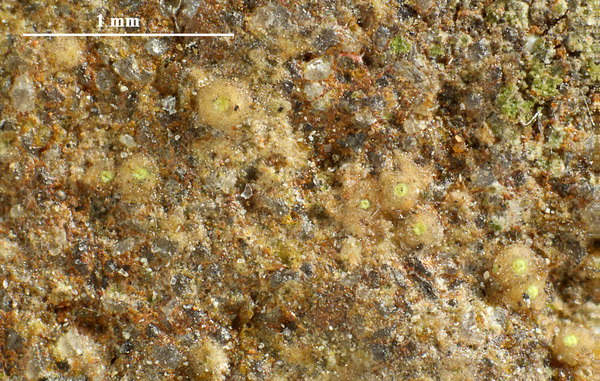Thelocarpon olivaceum B. de Lesd.
Rech. Lich. Dunkerque ,1 (suppl.): 149, 1914
Synonyms:
Distribution:
Description: Thallus crustose, reduced to small, scattered, 0.15-0.27 mm wide and 0.12-0.17 mm tall fruiting warts which are entirely bright yellow-pruinose or more rarely grey to brown and yellow-pruinose only at apex. Ascocarps frequent, perithecioid, fully immersed in the warts, with a concave, not exposed disc (the warts opening though a small pore). Exciple colourless, 6-12 μm thick, with an algal sheath, the outermost part free of algae, 6-12 μm thick, pseudocorticate; hymenial gel I- or I+ red, K/I+ blue; paraphyses absent; periphyses branched, easily detached, 20-25 μm long, arranged around the ostiole and on the sides. Asci many-spored, flask-shaped, tapering to apex, persistent, thin-walled, the wall I+ pale blue, not thickened at apex. Ascospores 1-celled, hyaline, oblong-ellipsoid to rarely subglobose, thin-walled, not constricted in the middle, (2-)2.5–3.5(-4) x 1.5–2 μm. Pycnidia located in the algal sheath of the fruiting warts, globose, c. 35 μm wide, the wall colourless. Conidia 4.5-5 x c. 1 μm. Photobiont chlorococcoid. Spot tests: K-, C-, KC-, P-. Chemistry: yellow pruina with pulvinic acid derivatives.Note: an ephemeral, pioneer lichen found on a wide variety of usually disturbed substrata (bricks and roofing tiles, recently exposed rocks, soil, even leather), rare throughout Europe, with a single record from the Eastern Alps (Austria). To be looked for in Italy.
Growth form: Crustose
Substrata: rocks, bark, and lignum
Photobiont: green algae other than Trentepohlia
Reproductive strategy: mainly sexual
Pioneer species

Predictive model
Growth form: Crustose
Substrata: rocks, bark, and lignum
Photobiont: green algae other than Trentepohlia
Reproductive strategy: mainly sexual
Pioneer species

Predictive model
 INDEX FUNGORUM
INDEX FUNGORUM
 GBIF
GBIF



